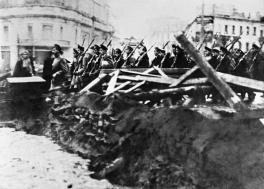The Junkers and the Cadet Corps in 1917
The Junkers and the Cadets (both groups made up from military school graduates) played an important role in the revolutionary events of 1917, and were some of the last defenders of the Provisional Government. Still, many of the Junkers did not join this cause of their own volition. A lot of them weren’t so much defending the power of Kerensky as they were fighting against the Bolsheviks, who were trying to break down the old army and make Russia withdraw from the war, which was seen by the majority of the students as an act of disgrace. So, the Cadets came to be the main armed opponents of the Bolshevik troops in the events of 1917.
For a long time, the Cadet Corps and the Junker schools remained a stronghold of support for the government and the monarchy – a contributing factor was the fact that the students of these institutions lived in relative isolation.
